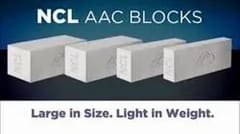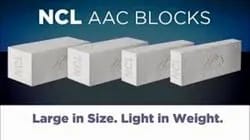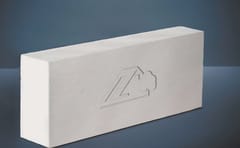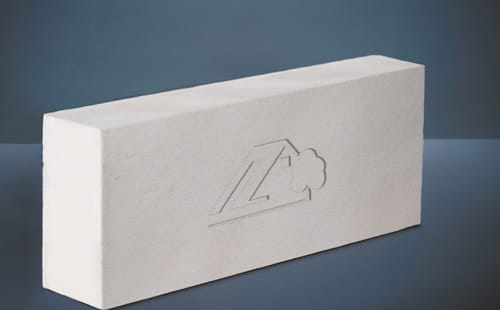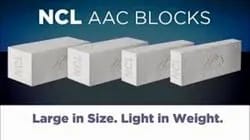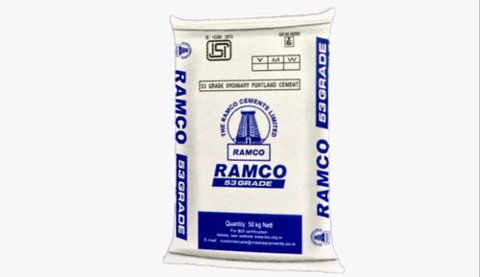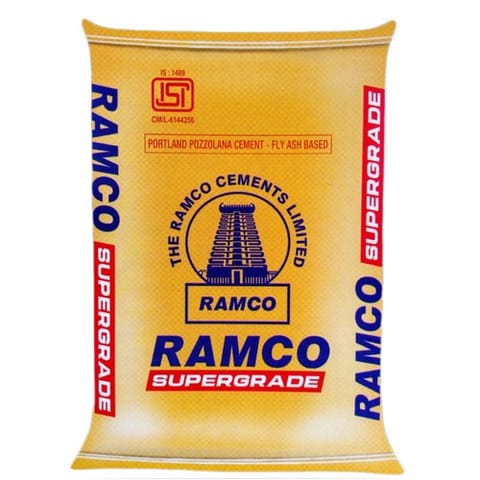AAC (Autoclaved Aerated Concrete) blocks are a type of lightweight precast concrete product that is widely used in the construction industry.
For Whatsapp Enquiry:
Here are some key characteristics and features of AAC blocks:
Composition: AAC blocks are made from sand, cement, lime, and aluminum powder. The key ingredient that distinguishes AAC from other concrete products is the inclusion of aluminum powder, which reacts with lime and water to form hydrogen gas, creating a lightweight cellular structure.
Production Process: The production of AAC blocks involves a process called autoclaving. The mixture of raw materials is poured into molds and then subjected to steam and high pressure inside an autoclave. This process results in the formation of air bubbles throughout the material, giving it a lightweight and porous structure.
Lightweight: AAC blocks are significantly lighter than traditional concrete blocks. Their low density is due to the incorporation of air bubbles during the autoclaving process. This makes them easier to handle, transport, and work with during construction.
Insulation Properties: AAC blocks have excellent thermal insulation properties. The air pockets formed during the autoclaving process provide natural insulation, helping to regulate temperature and reduce energy consumption in buildings. This can contribute to energy efficiency and cost savings in both heating and cooling.
Fire Resistance: AAC blocks have good fire resistance properties. The inorganic and non-combustible nature of the material makes it suitable for use in structures where fire safety is a concern.
Sound Insulation: Due to their porous structure, AAC blocks also offer good sound insulation. This can contribute to a quieter and more comfortable living or working environment.
Dimensional Accuracy: AAC blocks are manufactured with precision, resulting in consistent dimensions. This can lead to faster and more efficient construction as the blocks can be easily stacked and aligned.
Environmentally Friendly: AAC blocks are considered environmentally friendly because they use a relatively small amount of raw materials, and the production process generates less waste compared to traditional concrete products. Additionally, their energy-efficient properties can contribute to reduced energy consumption in buildings.
Versatility: AAC blocks come in various sizes and shapes, providing versatility in construction. They can be used for load-bearing walls, non-load-bearing walls, and as a substitute for traditional bricks or concrete blocks in many applications.
Overall, AAC blocks offer a range of benefits that make them an attractive choice for modern construction projects, particularly those focused on energy efficiency, sustainability, and ease of construction.
Key Features and Areas of application
- Internal & external wall constructions for normal & multi-storeyed buildings.
- Individual houses.
- Highrise apartments.
- Partition walls.
- For fast constructions.
| Sl. No. | Attributes | Standard | NCL Block Conforms |
| 1 | Moisture | Mfg. Spec | < 22% |
| 2 | Dry density | IS 2185 | 550 – 650 kg/m3 |
| 3 | Compressive strength | IS 2185 | > 4.0 Mpa |
| 4 | Sound reduction index – W/O plastering | NA | 38 db |
| 5 | Fire resistance | IS 3809 | 4 – 6 Hr |
| 6 | Thermal conductivity | IS 2185 0.16 | w/m.k |
| 7 | Dry shrinkage | IS 2185 | 0.07% |
| 8 | Dimensional Accuracy | NA | +/- 1 mm |
Installation -
Before application – wet the brick. For better performance use self curing block / Brick mortar with 3 to 4 mm thickness and apply the same with notching trowel. Apply a thin layer of block mortar in the thickness of 3 to 4 mm on the clean and leveled surface using proper trowel on which the block work is to be carried out. Place the block on the laid block mortar in proper line and level. After placing the first block apply the jointing mortar of the same thickness i.e. 3-4 mm on both horizontal and vertical joint of the block then place the AAC bricks. The lentil should be placed for every 5 to 6 layers of AAC Blocks or 6 m length to avoid cracks. It should be placed on a complete block. Use a tool like hacksaw or rotary cutter to cut into required size & shape. Curing is not required.
DO's and Dont's -
Do’s
- The level from base to the top layer should be properly horizontal.
- There should not be any gap between the joints of AAC Blocks.
- Bottom layer of AAC Block should be properly laid, so that no gaps should come in between otherwise the blocks would crack.
- The lentil should be placed after every 5 to 6 layers of AAC Blocks or 6 m length to avoid cracks. It should be placed on a complete block.
- Storage on dry and even surface to avoid damage and contact with moisture.
- Before application – wet the block.
- Use self curing block mortar with 3 to 4 mm thickness only and notching is mandatory.
- Use a tool like hacksaw or rotary cutter.
- Should rest on full block.
Don’ts
- Do not use a rich mortar mix as it tends to shrink & might crack.
- Do not flood the brick with water.
- Do not construct a wall without coping the beam.
- Do not stack the blocks in haphazard manner or leave them exposed to rain or moisture
- Do not use tools like hammer, chisel etc. to cut the block
- Home
- Construction Products
- Cement and Cement Products
- NCL AAC BLOCKS
NCL AAC BLOCKS
SIZE GUIDE
Your enquiry has been sent
Product Enquiry Form
Leave us a message for futher information.
Description of product
AAC (Autoclaved Aerated Concrete) blocks are a type of lightweight precast concrete product that is widely used in the construction industry.
For Whatsapp Enquiry:
Here are some key characteristics and features of AAC blocks:
Composition: AAC blocks are made from sand, cement, lime, and aluminum powder. The key ingredient that distinguishes AAC from other concrete products is the inclusion of aluminum powder, which reacts with lime and water to form hydrogen gas, creating a lightweight cellular structure.
Production Process: The production of AAC blocks involves a process called autoclaving. The mixture of raw materials is poured into molds and then subjected to steam and high pressure inside an autoclave. This process results in the formation of air bubbles throughout the material, giving it a lightweight and porous structure.
Lightweight: AAC blocks are significantly lighter than traditional concrete blocks. Their low density is due to the incorporation of air bubbles during the autoclaving process. This makes them easier to handle, transport, and work with during construction.
Insulation Properties: AAC blocks have excellent thermal insulation properties. The air pockets formed during the autoclaving process provide natural insulation, helping to regulate temperature and reduce energy consumption in buildings. This can contribute to energy efficiency and cost savings in both heating and cooling.
Fire Resistance: AAC blocks have good fire resistance properties. The inorganic and non-combustible nature of the material makes it suitable for use in structures where fire safety is a concern.
Sound Insulation: Due to their porous structure, AAC blocks also offer good sound insulation. This can contribute to a quieter and more comfortable living or working environment.
Dimensional Accuracy: AAC blocks are manufactured with precision, resulting in consistent dimensions. This can lead to faster and more efficient construction as the blocks can be easily stacked and aligned.
Environmentally Friendly: AAC blocks are considered environmentally friendly because they use a relatively small amount of raw materials, and the production process generates less waste compared to traditional concrete products. Additionally, their energy-efficient properties can contribute to reduced energy consumption in buildings.
Versatility: AAC blocks come in various sizes and shapes, providing versatility in construction. They can be used for load-bearing walls, non-load-bearing walls, and as a substitute for traditional bricks or concrete blocks in many applications.
Overall, AAC blocks offer a range of benefits that make them an attractive choice for modern construction projects, particularly those focused on energy efficiency, sustainability, and ease of construction.
Key Features and Areas of application
- Internal & external wall constructions for normal & multi-storeyed buildings.
- Individual houses.
- Highrise apartments.
- Partition walls.
- For fast constructions.
| Sl. No. | Attributes | Standard | NCL Block Conforms |
| 1 | Moisture | Mfg. Spec | < 22% |
| 2 | Dry density | IS 2185 | 550 – 650 kg/m3 |
| 3 | Compressive strength | IS 2185 | > 4.0 Mpa |
| 4 | Sound reduction index – W/O plastering | NA | 38 db |
| 5 | Fire resistance | IS 3809 | 4 – 6 Hr |
| 6 | Thermal conductivity | IS 2185 0.16 | w/m.k |
| 7 | Dry shrinkage | IS 2185 | 0.07% |
| 8 | Dimensional Accuracy | NA | +/- 1 mm |
Installation -
Before application – wet the brick. For better performance use self curing block / Brick mortar with 3 to 4 mm thickness and apply the same with notching trowel. Apply a thin layer of block mortar in the thickness of 3 to 4 mm on the clean and leveled surface using proper trowel on which the block work is to be carried out. Place the block on the laid block mortar in proper line and level. After placing the first block apply the jointing mortar of the same thickness i.e. 3-4 mm on both horizontal and vertical joint of the block then place the AAC bricks. The lentil should be placed for every 5 to 6 layers of AAC Blocks or 6 m length to avoid cracks. It should be placed on a complete block. Use a tool like hacksaw or rotary cutter to cut into required size & shape. Curing is not required.
DO's and Dont's -
Do’s
- The level from base to the top layer should be properly horizontal.
- There should not be any gap between the joints of AAC Blocks.
- Bottom layer of AAC Block should be properly laid, so that no gaps should come in between otherwise the blocks would crack.
- The lentil should be placed after every 5 to 6 layers of AAC Blocks or 6 m length to avoid cracks. It should be placed on a complete block.
- Storage on dry and even surface to avoid damage and contact with moisture.
- Before application – wet the block.
- Use self curing block mortar with 3 to 4 mm thickness only and notching is mandatory.
- Use a tool like hacksaw or rotary cutter.
- Should rest on full block.
Don’ts
- Do not use a rich mortar mix as it tends to shrink & might crack.
- Do not flood the brick with water.
- Do not construct a wall without coping the beam.
- Do not stack the blocks in haphazard manner or leave them exposed to rain or moisture
- Do not use tools like hammer, chisel etc. to cut the block
Related products
User reviews
ARCSLOT is a one stop solution for all your construction needs. ARCSLOT is the only place where you can explore wide range of Construction material, Various Construction Job services and Design services. ARCSLOT gives you reliable, transparent, tangible and trustworthy solutions for all your construction, interiors, Infrastructure and Mechanical related sectors.
arcslot
26-25-19, GSN Sastry Road, Near Vizag Port, Visakhapatnam.
VISAKHAPATNAM
Andhra Pradesh 530002
IN

